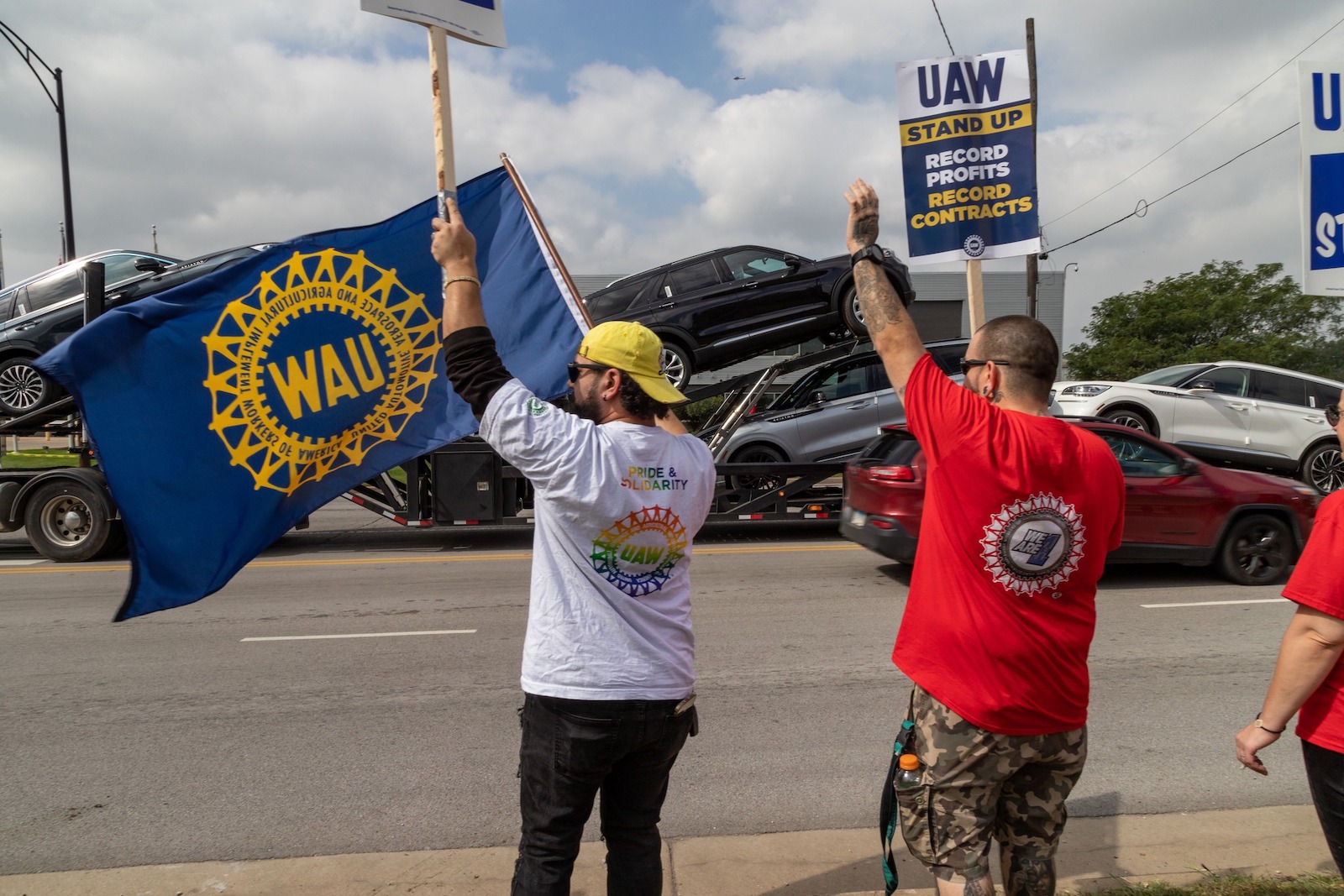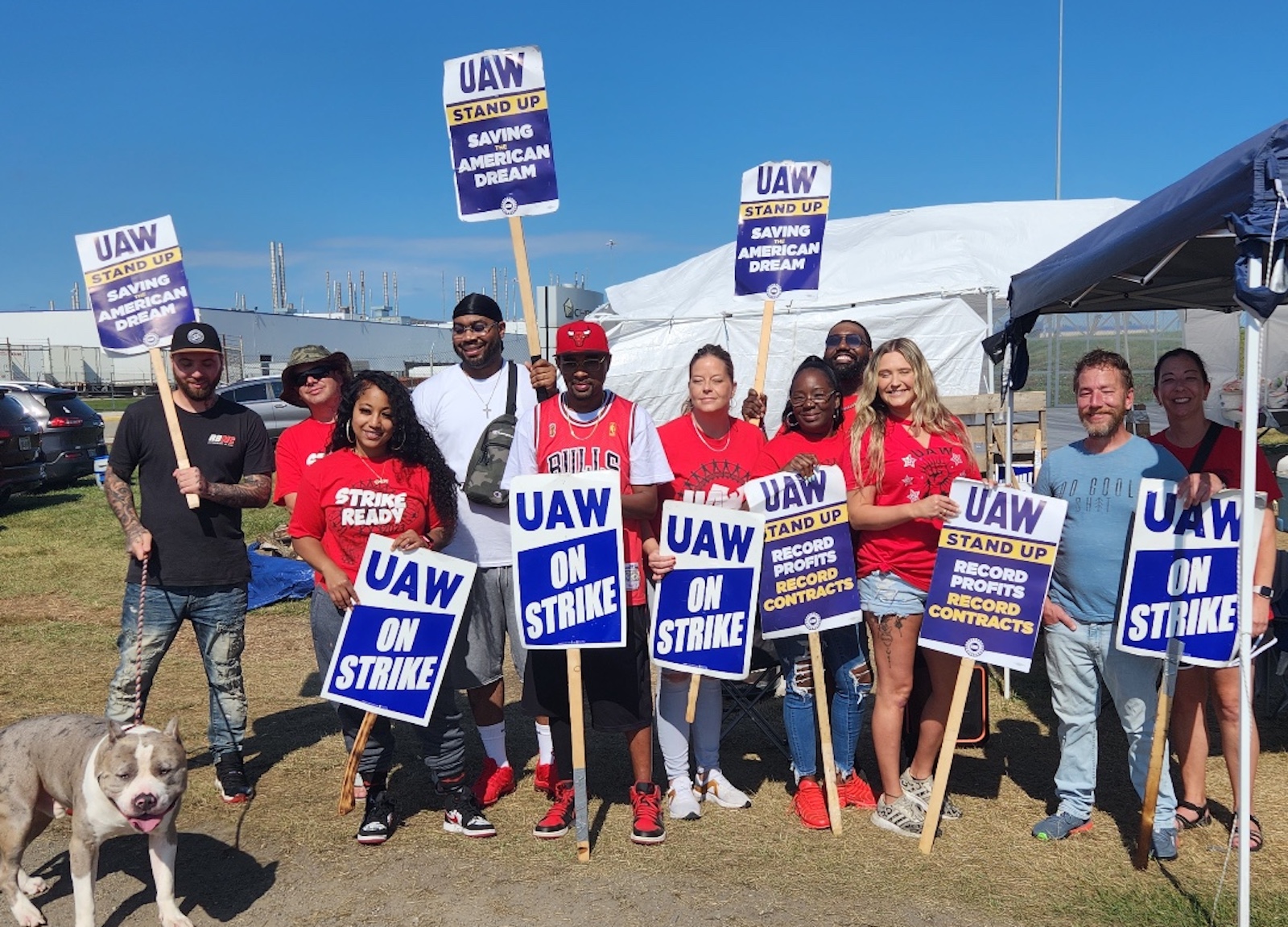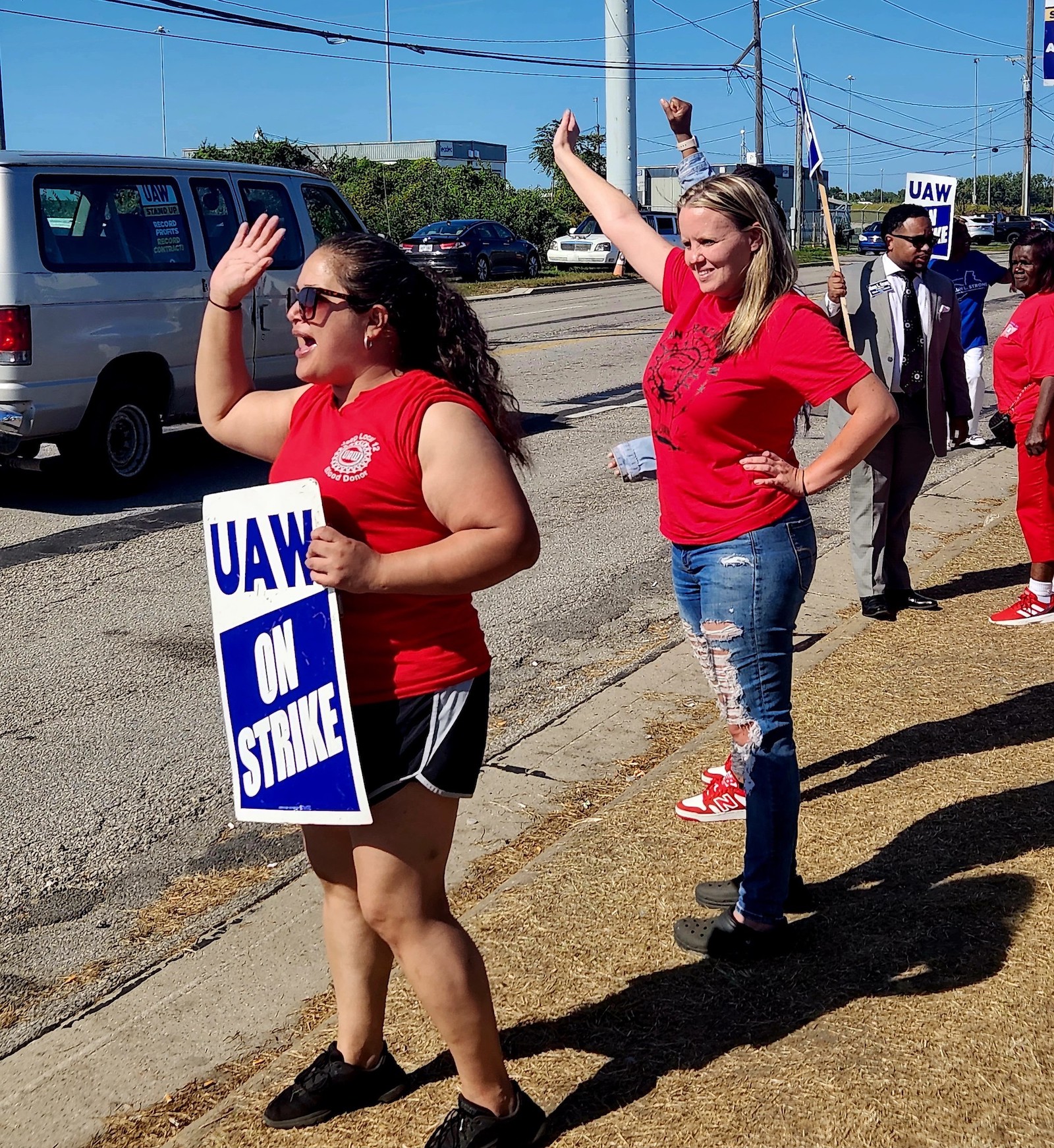With the calendar moving deeper into autumn, the costs of the United Auto Workers’ three-week strike are mounting as negotiations continue with few signs of progress.
“Negotiations continue. Our focus remains on working diligently with the UAW to reach a deal that rewards our workforce and enables Ford to invest in a vibrant and growing future,” Ford said in statement. On the union side, sources familiar with the bargaining said UAW representatives held formal meetings with GM and Stellantis.

Workers have remained strong in their efforts to secure a better deal from the Detroit Three automakers.
As the cost of the strike passed $4 billion in lost wages, profits and other costs, according to Anderson Consulting of Lansing, Michigan, union officials pointed to recent polls, which showed widespread public support for the UAW’s fight for a big wage increase.
UAW touts public support
“Nearly four out of five Americans support the UAW over the Big Three automakers in the ongoing Stand Up Strike. Across partisan and demographic lines, a supermajority of Americans are standing with the UAW in the union’s fight against corporate greed at the Big Three,” the union said in a statement.
The UAW added a poll by Navigator Research highlights the public’s overwhelming support for collective bargaining and the right to strike, including 74% of Republican voters.
If the automakers fail to make progress in negotiations, more locals will be called on to Stand Up and join the strike against that company, the union said.
Strike-related layoffs mounting
With no sign of progress at the bargaining table, GM and Ford announced another round of layoffs at plants that supply components to assembly plants closed by the UAW strikes against both automakers.
“Our production system is highly interconnected, which means the UAW’s targeted strike strategy has knock-on effects for facilities that are not directly targeted for a work stoppage,” Ford said in a statement.
In this case, the strike at Chicago Assembly Plant has directly impacted some operations at Chicago Stamping Plant and Lima Engine Plant. Approximately 330 employees have been asked not to report to work, with layoffs taking effect beginning Sept. 30 at Chicago Stamping Plant and Oct. 2 at Lima Engine Plant.
These are not lock outs. These layoffs are a consequence of the strike at Chicago Assembly Plant, because these two facilities must reduce production of parts that would normally be shipped to Chicago Assembly Plant.
These 330 layoffs are in addition to 600 laid off from Michigan Assembly Plant beginning Sept. 15, bringing Ford’s total to 930 employees impacted by strike-related layoffs, Ford said.
“We understand to date there are about 2,400 supplier employees that have been laid off. But as a consequence of the actions today, we see this two-week inflection point,” Liz Door, Ford’s chief supply chain officer, noted during a Sept. 29 briefing.
“We have roughly 125,000 supplier employees that support our Michigan Assembly Plant. And if prolonged, this really could have a significant impact as it extends into our other Ford factories. We see anywhere between 325,000 to 500,000 employees that could be laid off.”
GM said in an email it was idling 130 employees at the GM stamping plant in Parma, Ohio and 34 employees at GM stamping plant in Marion, Indiana.
With both sides fighting for support, GM blamed the strike on union.
“The UAW leadership’s decision to call a strike at GM Wentzville Assembly, and now GM Lansing Delta Township Assembly, continues to have negative ripple effects. Beginning Monday, October 2nd, a portion of GM’s Parma Metal Center and Marion Metal Center represented workforce will have no work available.
“The affected team members are not expected to return until the strike has been resolved. Since we are working under an expired labor agreement, there are no provisions for company-provided SUB-pay in this circumstance.
“We have said repeatedly that nobody wins in a strike, and this is yet another demonstration of that fact. We will continue to bargain in good faith with the union to reach an agreement as quickly as possible.”




0 Comments